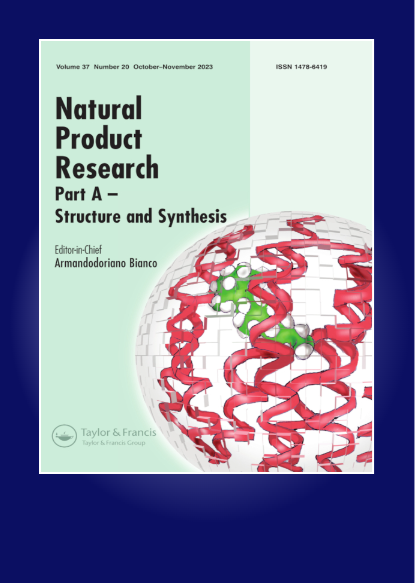Experimental studies on thermal and FTIR characterisation of bio-degradable neat neem gum and epoxy resin for composite material applications
IF 1.9
3区 化学
Q3 CHEMISTRY, APPLIED
引用次数: 0
Abstract
This article aims to assess the suitability of natural neem gum in various composite material applications in place of epoxy resin. The assessment was done by thermal characterisation, experimental study and comparative analysis of thermal behaviour, Fourier transform IR spectroscopy (FTIR) characterisation and comparison of functional groups and mechanical properties of neat epoxy and neat neem resins. To study and compare thermal behaviour differential scanning calorimetry (DSC), thermogravimetric (TG) and relative derivative TG (DTG) analysis were conducted. The glass transition temperatures, exothermic and endothermic peaks, curing of thermosetting epoxy and crystallisation of polymeric neem, value of % cure and mass change or mass loss concerning temperature of both the resins were experimentally determined and comparative analysis was conducted to find the suitability of neem resin in composite material applications in place of epoxy resin. Functional groups of neem gum were identified and mechanical properties such as bond strength, toughness, rigidity and ductility were characterised and compared with that of epoxy resin by conducting FTIR.
用于复合材料应用的可生物降解纯印楝胶和环氧树脂的热特性和FTIR特性的实验研究。
本文旨在评估天然印楝胶代替环氧树脂在各种复合材料应用中的适用性。通过热表征、热行为的实验研究和比较分析、傅立叶变换红外光谱(FTIR)表征以及纯环氧树脂和纯neem树脂的官能团和机械性能的比较来进行评估。为了研究和比较热行为,进行了差示扫描量热法(DSC)、热重分析(TG)和相对导数TG分析(DTG)。通过实验确定了玻璃化转变温度、放热和吸热峰、热固性环氧树脂的固化和聚合物neem的结晶、%固化值以及与温度有关的质量变化或质量损失,并进行了比较分析,以发现neem树脂代替环氧树脂在复合材料应用中的适用性。通过红外光谱对印楝胶的官能团进行了鉴定,并对其粘结强度、韧性、刚度和延展性等力学性能进行了表征,并与环氧树脂进行了比较。
本文章由计算机程序翻译,如有差异,请以英文原文为准。
求助全文
约1分钟内获得全文
求助全文
来源期刊

Natural Product Research
化学-医药化学
CiteScore
5.10
自引率
9.10%
发文量
605
审稿时长
2.1 months
期刊介绍:
The aim of Natural Product Research is to publish important contributions in the field of natural product chemistry. The journal covers all aspects of research in the chemistry and biochemistry of naturally occurring compounds.
The communications include coverage of work on natural substances of land and sea and of plants, microbes and animals. Discussions of structure elucidation, synthesis and experimental biosynthesis of natural products as well as developments of methods in these areas are welcomed in the journal. Finally, research papers in fields on the chemistry-biology boundary, eg. fermentation chemistry, plant tissue culture investigations etc., are accepted into the journal.
Natural Product Research issues will be subtitled either ""Part A - Synthesis and Structure"" or ""Part B - Bioactive Natural Products"". for details on this , see the forthcoming articles section.
All manuscript submissions are subject to initial appraisal by the Editor, and, if found suitable for further consideration, to peer review by independent, anonymous expert referees. All peer review is single blind and submission is online via ScholarOne Manuscripts.
 求助内容:
求助内容: 应助结果提醒方式:
应助结果提醒方式:


